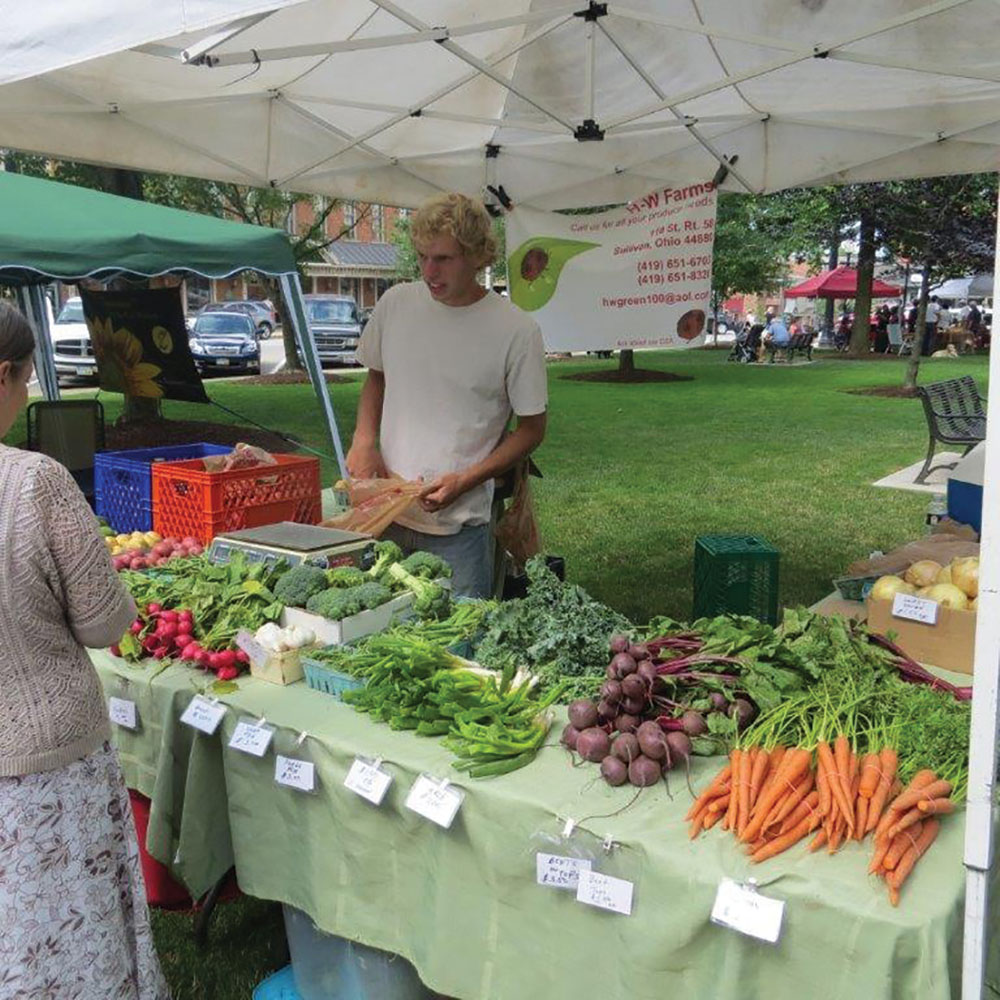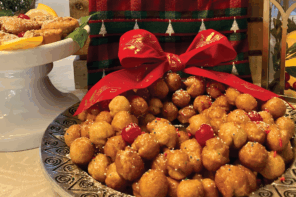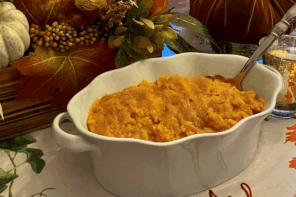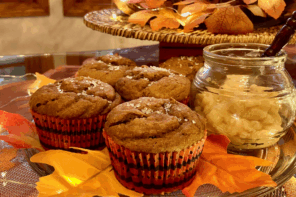By Ann Harman
Farmers markets are now such an important part of our society that in 2014 the U.S. Postal Service issued a stamp commemorating them. Perhaps you have thought about joining a farmers market to sell your honey along with beeswax candles and ornaments. Or are you considering starting one on your small farm not only with your honey but also the neighbors’ excess tomatoes, zucchini and other vegetables and fruits? Let’s consider these two choices. Then you can decide which is best for you and your hive products.
Before you make any decision important items must be looked at – your insurance policies. Are you covered for product liability? Claims have evidently increased in recent years. What is product liability? It refers to legal liability for any damage or injury that came from the use of a producer’s goods or services. Does your insurance cover sales of unprocessed foods, such as honey, tomatoes, squash, etc., sold at a farmers market or at a roadside stand? In addition, more insurance coverage may be needed if anything can be considered processed, such as jams and jelly or flavored honey. If you are unsure about exactly what your liability insurance covers, contact your insurance agent and explain exactly what you plan to do.
First we’ll look at the local farmers market. Have you visited this market? Bought something there? If so, you have a good idea of the various stands, what they sell, if prices seem reasonable. How about the customers – lots of happy ones? Just one more question – is anyone selling honey there? Some large farmers markets can support more than one beekeeper selling honey; small markets probably cannot.

People are more inclined to buy anything if it looks like there are lots to sell. Seldom do the last two of anything sell – the question in the buyer’s mind is ‘what’s wrong with those?’
Well, nobody is selling honey or any other hive products. Now your first step is to ask some questions and get some information. You need to speak to the organizers of the market to see if there is room for your table and if your honey and beeswax candles would be accepted. You also need to know what fees may be required to participate in the market. What about charging customers any sales taxes? You now need to consider all the possible expenses. Well, is it worthwhile? Will it be profitable? If so, then participating in the local farmers market could be an excellent way to sell your honey and any other hive products.
You will need to investigate any requirements, rules, regulations, and inspections of the county and state you live in. You are producing a food product. However the only thing in your containers is honey, not a mixture of honey and other ingredients. Once you start adding other items to your honey or selling honey cookies you enter another world of those regulations and inspections.
If you live in an area where your bees collect honey from several sources, having a variety of colors and flavors is desirable. One question to find out from the market organizer as well as county and state regulators is – can taste samples of honey be given to customers? Taste samples do help sell honey but if it is not possible there are ways to provide take-home taste samples. The two-ounce bear could be used, either given free or sold at a small price. You can find other small plastic containers suitable for a take-home taste sample but be certain they are food-grade plastic.
One item you could make with your honey and probably does not belong to the world of regulations and inspections, is – dog biscuits. These could turn out to be your best-selling item. Recipes for these using honey do exist, as do the bone-shaped cookie cutters. List the ingredients on a small label since some dogs do have allergies. To be safe, check that they are acceptable with the market organizer and do not fall under any county or state regulations.
Now for your basic equipment. You need a table unless the market provides them and it must be stable enough so children pushing against it cannot upset the jars of honey. Remember, wind will blow and rain will fall. Protection from sun and rain can be had with a pop-up canopy or tent. (Make sure it is permitted.) Look for fabric with bees for a tablecloth; if you can’t find bees, flowers would be fine. Think about signs. They can take the place of answering questions when you are busy talking with a customer. Any posters or signs should look professional, not hastily scribbled and misspelled. Hand your customers a business card and suggest they pass it along to a friend, a neighbor.
Have you considered the sizes and types of honey containers available? Children (and adults, too) like the squeeze bear. They come in different sizes and styles. Some need hang tags; others have spaces for labels. Glass jars make honey look beautiful. You could attach a honey dipper to those jars as an extra enticement. Be sure to have the inverted jar. These have become very popular because they do not drip or make a sticky mess. You could have one as a demonstration – squeeze a bit on a plate, then show how it does not drip when you stop squeezing.
In the beginning you will not have any idea of the size containers of honey your customers prefer. Those who cook with honey and those with family might prefer a two-pound container. Those who use honey in only their tea or for a cough may want a smaller one. A small label explaining crystallization and how to liquefy honey is very helpful. Some may believe crystallized honey has spoiled. Don’t hesitate to educate your customers about honey.
Your labels must be legal. Sometimes inspectors do come through farmers markets and may or may not look at your labels. To check the requirements you can visit the National Honey Board website at www.honey.com and put the word ‘labels’ in the search box. Generally states follow those but to be safe, check with your state’s Department of Agriculture. Although you may wish to use the word ‘natural’ on your label there is no official definition of that word.
You will probably be displaying your honey on a table. So customers will be looking down at the tops of your jars except for the inverted ones. So put your jars on your dining room table and pretend you are a customer. Those jars with caps would certainly look more eye-catching if a colorful label were on top. Those labels could have various designs perhaps indicating floral source or saying ‘local honey.’ For the bears, the spout tops come in a large assortment of colors. Different colors could indicate different flavors. Also colors could be for holidays – red, white and blue for the 4th of July.
Do you plan on giving handouts to your customers? Recipes for something quick and easy to make, seasonal recipes, and ones that children can make might be appreciated. Recipes use honey so your customer has to buy more! The National Honey Board has many recipes and new ones are put on the website continually. Conversation with a beekeeper frequently leads to current bee problems. One handout could be a list of garden plants bees use for pollen and nectar.

It’s hard to wait on customers, take money, weigh produce, refill displays and answer questions if you are all by yourself, but price signs help.
How busy is this farmers market? Will you need an assistant? Although it would be nice if the assistant were a beekeeper able to answer the usual questions, it can be just as helpful for someone to take money and give change as well as giving handouts.
You must give serious thought for your answers to questions that some customers will ask. For example, you will be asked ‘will your local honey cure my hay fever?’ You must not in any way say or imply a cure. That is a health claim and you can get into trouble making it. Another common question is: ‘Since I have diabetes, can I eat your honey?’ The correct answer to that is to tell those people to consult their doctor. You are not a doctor and even if you were you have no knowledge of the diabetic condition of the potential customer.
Now that you have had some experience with a farmers market perhaps it is time to consider making one of your own. Your neighbor, with a huge vegetable garden, always grows too many tomatoes (look at all the varieties!) and has plenty of room to grow melons and pumpkins. The vegetables and fruits are not exposed to insecticides and other sprays. Although the products might not exactly fit the organic standards, they will be very desirable. You live on a rural road but it has enough traffic to support a modest farmers market with your honey and the neighbor’s vegetables and fruits. You have plenty of space to set up a stand. The neighbor and family will help set up and sell.
First of all check with your county to see if regulations will permit your planned mini-market, if any fees or licenses, and if you can have a sign by the road. It would be nice if you could have a sign at your entrance plus signs a short distance away on both sides of the road. If people driving by those signs know that the market entrance is ahead they can look for the entrance easily. By the way, put the days and times the stand will be open at least on the sign at the entrance.
Now that you have the permission from the county, it is time to start constructing the market. Is your lane to the stand area full of ruts and mud after a rain? Now is the time to fix that lane! What about the place cars will park? Customers really do not need to slide around in mud there either.
You and your neighbor will have to decide on the days and times the market will be open. You may wish to have one day for late afternoon and early evening to sell to those going home from work. Saturday morning is good. If there are other vegetable stands nearby you may want to plan to be open at different days and times than those. Know your weather patterns. Make your open times accordingly.
The neighbor has offered the old hay wagon as the place to put the honey and the veggies. The bed is in good condition so a cover for it may not be needed although it may be more attractive. However a pop-up canopy or top would be good protection, especially if fog or mist is a problem. If no trees are shading the wagon a pop-up will provide needed shade also.
Customers will be able to walk around the wagon. Your honey can be at one end of the wagon so the containers will be visible from three sides. Make some price tags for the vegetables. The prices can also be on a poster in large, easy to read numbers. You can put up a card table a short distance from the wagon for the person taking the money. Ask your friends to save bags of all kinds – plastic and paper – so you can offer them to customers. You can even suggest that the customers return with the bags when they come to buy again.
If vegetables and fruits are sold by the pound, a digital scale will be necessary. They are inexpensive. Your neighbor can buy one that will either come with a container or will support a container. If your neighbor will be selling berries and cherry tomatoes these would be best if sold in the pressed paper boxes. Recipe handouts using honey with the seasonal fruits and vegetables will help to sell both.
Does your area have a local newspaper? These are disappearing all over the country but if one exists in your area ask them to put in a little article, with perhaps a photo, announcing the opening of your farmers stand. If no local newspaper, make posters – remember, a professional appearance – and put up the posters in a number of places nearby. At the start of the mini-market advertising will be necessary. After all, nobody has seen honey or vegetables for sale at your place before so people will just drive past.
When customers find that you are a beekeeper you will suddenly become a voice for the preservation not only of honey bees but also for all pollinators. Read books and magazines and keep up with the news so that you are giving correct and useful information. Your honey bees will appreciate that.
Ann Harman lives and keeps bees in Flint Hill, Virginia and knows all about running a Farm Market.













